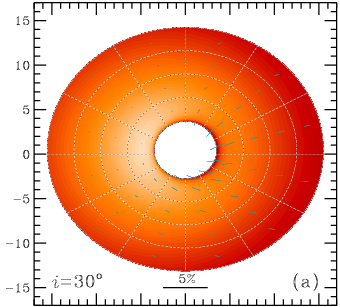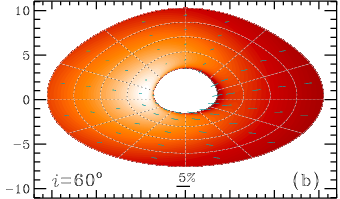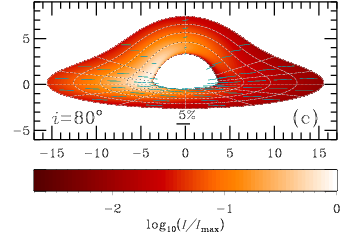Research topics at Nordita include accretion onto black holes and neutron stars. The focus is on sub-Eddington accretion rates, i.e., at rates low enough that the emitted radiation does not prevent the matter from falling down the compact object. The accretion can proceed either via a geometrically thin and opaque accretion disc, or a geometrically thick, transparent accretion flow. The former geometry is formed at higher accretion rates, while the latter configuration is believed to be relevant to the compact objects accreting at lower rates. This dichotomy can be responsible for the different appearance of accreting supermassive black holes in quasars (accreting at high rates) and Seyfert galaxies (accreting at lower rates) in the X-ray band. The physics of accretion flows is complex as it is composed of a plasma residing in a collisionless regime, whose dynamics and thermodynamics are strongly affected by the self-produced radiation. Radiation escaping the accretion flow in the vicinity of the black hole is also affected by the strong gravitational field of the compact object and rapid motions of matter. Identifying these signatures in the observed data can be verified by the predictions of special and general relativity.
A major breakthrough in our view on the black holes was achieved by the Event Horizon Telescope Collaboration, which detected the radio image of a black hole residing in the center of the nearby galaxy M87. However, most of the supermassive black holes and all their stellar-mass counterparts have characteristic sizes which are too small to be directly resolved - even with modern instruments. The accretion geometry and the basic parameters of these objects are studied via the multiwavelength spectral, timing, and polarimetric information.
The research at Nordita is tightly related to these studies. Members of our group have developed the concept of hot accretion flows with hybrid (thermal and non-thermal) particles and have shown that signatures of such flows are observed in the spectral and timing properties at X-ray and optical/infrared bands. Current investigations concern broadband polarimetric properties of such flows, owing to the recent launch of the Imaging X-ray Polarimetry Explorer, the first satellite dedicated to measuring the X-ray polarization.
Polarimetry has already proved its power of determining basic parameters of accreting systems in X-ray binaries, where the black hole is accreting from the companion star, orbiting around it. Using the high-precision optical polarimetry, for the first time we reliably determined a high, more than 40 degrees, misalignment angle between the spin of the stellar-mass black hole and the orbital axis of the binary. This puts tight constraints on the models of formation of such systems and determines the behavior of matter in the proximity of the compact object (such as the Lense-Thirring precession). To understand the existence of systems with high misalignment requires significant adjustments in models determining the black holes' spins, as the structure of the accretion disc and the echos of the produced X-ray radiation are expected to deviate from those for the case of perfect alignment.



Images of an accretion disc as viewed at three inclinations i = 30 (a), 60 (b) and 80 (c) degrees, plotted using analytical formulae for light bending (from Loktev et al. 2022). The contours show the images of rings of equal radii radii and equal azimuths. The colors reflect the brightness of the disc. The blue sticks give the polarization. Their length reflects the polarization degree, and the orientation gives the polarization angle.
Poutanen, J. & Veledina, A. 2014, SSRv, 183, 61. "Modelling Spectral and Timing Properties of Accreting Black Holes: The Hybrid Hot Flow Paradigm" Veledina, A. 2016, ApJ, 832, 181. "Interference as an Origin of the Peaked Noise in Accreting X-Ray Binaries" Axelsson, M. & Veledina, A. 2021, MNRAS, 507, 2744. "Accretion geometry of the black hole binary MAXI J1820+070 probed by frequency-resolved spectroscopy" Loktev, V., Veledina, A., Poutanen, J. 2022, A&A in press. "Analytical techniques for polarimetric imaging of accretion flows in Schwarzschild metric" Poutanen, J., Veledina, A., Berdyugin, A.V., Berdyugina, S.V., Jermak, H., Jonker, P.G., Kajava, J.J.E., Kosenkov, I.A., Kravtsov, V., Piirola, V., Shrestha, M., Torres, M.A.P., Tsygankov, S.S. 2022, Science in press. "Extreme black hole spin-orbit misalignment in X-ray binary MAXI J1820+070"